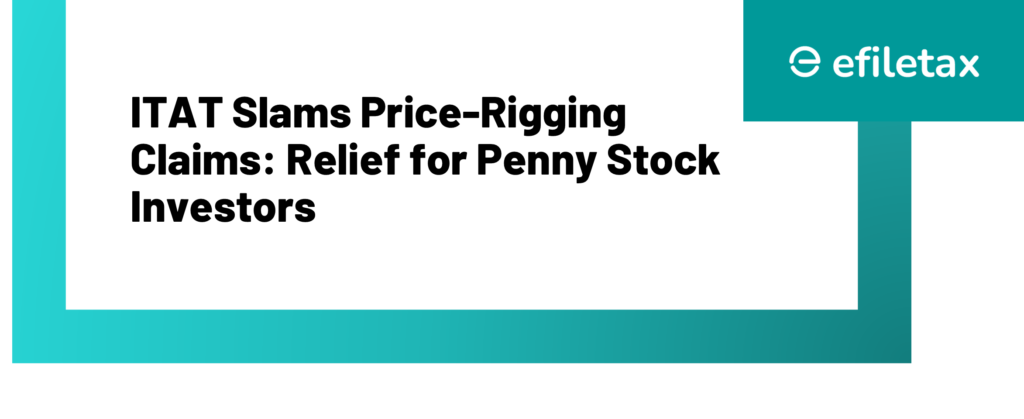
Introduction
ITAT rejects price-rigging allegations in penny stock cases, ruling that suspicion alone can’t justify taxation. In a recent judgment, the Income Tax Appellate Tribunal (ITAT) provided much-needed clarity for taxpayers facing scrutiny over low-cap stock gains.
What Was the Case About?
- Taxpayers earned Long-Term Capital Gains (LTCG) from selling penny stocks.
- Income Tax Department accused them of manipulating prices to claim tax-free income under Section 10(38) of the Income Tax Act, 1961 (applicable at that time).
- The case lacked solid proof like money trail, insider trading evidence, or collusion documents.
ITAT’s Observations:
Why the Allegations Failed
- No direct evidence linking taxpayers to any rigging activity.
- Share trading was routed through recognised stock exchanges with proper documentation.
- Demat account statements, contract notes, and bank records all matched.
- Merely relying on “price rise patterns” is not enough to discredit genuine transactions.
Legal References
- Section 10(38) (now withdrawn): Exempted LTCG from sale of listed securities.
- CBDT Instruction No. 5/2016: Emphasises the need for evidence-backed assessments, not presumptions.
- High Court Precedents:
- PCIT vs. Kruti Shah (2020): Mere abnormal profits without evidence ≠ bogus gains.
- CIT vs. Lavanya Land Pvt Ltd (2017): Trading through SEBI-regulated platforms presumed genuine unless proven otherwise.
Quick Table: Genuine vs. Bogus Stock Gains
| Feature | Genuine Transaction | Bogus Transaction |
|---|---|---|
| Trading platform | Recognised stock exchange | Off-market, informal |
| Payment Mode | Banking channels | Cash or unclear funds |
| Records available | Yes (Demat, contract notes) | None or inconsistent |
| Price Movement | Can be volatile but explainable | Artificial spikes without basis |
Why This ITAT Ruling Matters
- Reinforces that burden of proof lies with the Income Tax Department.
- Helps genuine investors defend against baseless tax additions.
- Encourages proper record-keeping among taxpayers dealing with volatile stocks.